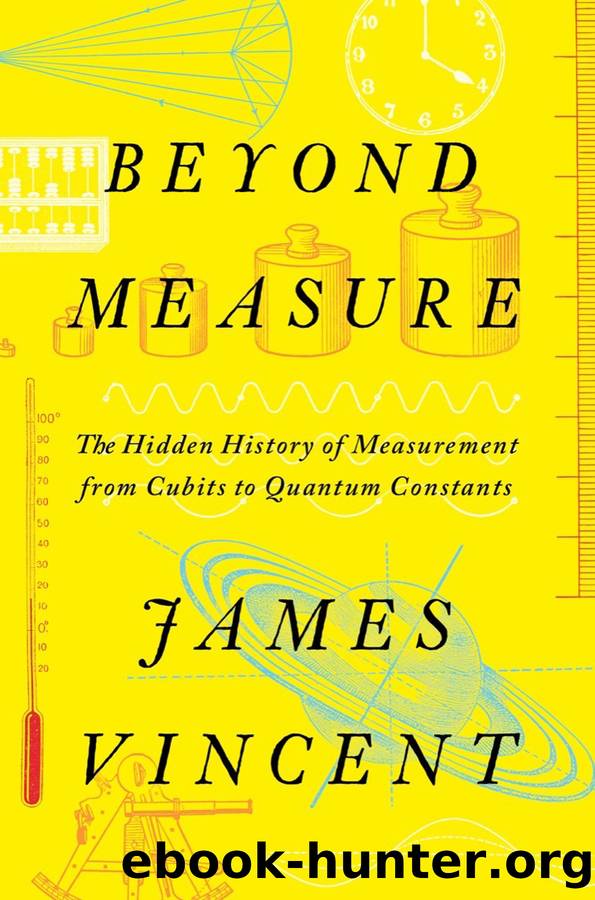Beyond Measure: the Hidden History of Measurement from Cubits to Quantum Constants by James Vincent

Author:James Vincent
Language: eng
Format: epub
Publisher: W. W. Norton & Company
Published: 2022-09-29T00:00:00+00:00
Belgian statistician Adolphe Quetelet applied numerical techniques borrowed from astronomers to new indices of data, including the human body
In our time, the concept of the average is most likely to be seen as an insult, as an indictment of mediocrity. But for Quetelet, to be average was to be perfect. He saw the average statistics in his biometric data as the proper outcome of natural laws; an indication that the subject was free of all abnormality. The average man, he wrote, exists âin a just state of equilibrium, in a perfect harmony, equally distant from excesses and defects of every kind, in such a way that . . . one must consider him as the type of all that is beautiful and all that is goodâ.24 As Hacking notes, Queteletâs achievement in Sur lâhomme and his subsequent works is a subtle but significant transformation of what statistical measures mean.25 When the normal distribution was applied in astronomy, the average reading was not necessarily taken to be the real value, but a best approximation accounting for random error. Quetelet, however, transformed this mathematical shorthand into a âreal qualityâ â something that was true of the groups of humans he studied. It is an ontological reordering that turns abstract measure into something tangible, and while the result is not necessarily false, it is definitely constructed, and therefore fallible.
Queteletâs work was received with fascination and acclaim. A three-part review in Londonâs Athenaeum concluded: âWe consider the appearance of these volumes as forming an epoch in the literary history of civilization.â26 His work triggered a statistical feeding frenzy among the professional classes, with societies, journals, and institutions devoted to the discipline springing up across Europe. Members collected and published data of increasingly dubious relevance, with one resourceful acolyte siphoning off the contents of the toilets in a busy train station to attempt to deduce the âaverage European urineâ.27 And Queteletâs own work began to expand in scope too, as he looked beyond the dimensions of the human body to the wider patterns of societal data. Here he distinguished himself not as a mathematician but as a miner of quantitative ore, delving into government publications and scientific journals to find data to work with. He collected statistics on crime and suicide rates, on marriages, births, and disease, and cross-referenced his findings by age, sex, occupation, and place of residence.
The more Quetelet collected, the more he discovered shocking regularity in societyâs workings. Even the most passionate activities â marriage and murder, for example â seemed to barely differ year by year in many countries. The results disturbed and excited him in equal measure. In one analysis of Parisian police statistics, he notes âthe terrifying exactitude with which crimes reproduce themselvesâ â not just in the number of murders each year but in the proportion of stabbings to shootings to strangulations. âWe know in advance how many individuals will dirty their hands with the blood of others, how many will be forgers, how many poisoners, nearly as well as one can enumerate in advance the births and deaths that must take place,â he wrote.
Download
This site does not store any files on its server. We only index and link to content provided by other sites. Please contact the content providers to delete copyright contents if any and email us, we'll remove relevant links or contents immediately.
| Applied | Geometry & Topology |
| History | Infinity |
| Mathematical Analysis | Matrices |
| Number Systems | Popular & Elementary |
| Pure Mathematics | Reference |
| Research | Study & Teaching |
| Transformations | Trigonometry |
Modelling of Convective Heat and Mass Transfer in Rotating Flows by Igor V. Shevchuk(6375)
Weapons of Math Destruction by Cathy O'Neil(6115)
Factfulness: Ten Reasons We're Wrong About the World – and Why Things Are Better Than You Think by Hans Rosling(4670)
Descartes' Error by Antonio Damasio(3208)
A Mind For Numbers: How to Excel at Math and Science (Even If You Flunked Algebra) by Barbara Oakley(3201)
Factfulness_Ten Reasons We're Wrong About the World_and Why Things Are Better Than You Think by Hans Rosling(3182)
TCP IP by Todd Lammle(3117)
Fooled by Randomness: The Hidden Role of Chance in Life and in the Markets by Nassim Nicholas Taleb(3017)
Applied Predictive Modeling by Max Kuhn & Kjell Johnson(3004)
The Tyranny of Metrics by Jerry Z. Muller(2978)
The Book of Numbers by Peter Bentley(2896)
The Great Unknown by Marcus du Sautoy(2630)
Once Upon an Algorithm by Martin Erwig(2581)
Easy Algebra Step-by-Step by Sandra Luna McCune(2560)
Lady Luck by Kristen Ashley(2513)
Practical Guide To Principal Component Methods in R (Multivariate Analysis Book 2) by Alboukadel Kassambara(2482)
Police Exams Prep 2018-2019 by Kaplan Test Prep(2466)
All Things Reconsidered by Bill Thompson III(2344)
Linear Time-Invariant Systems, Behaviors and Modules by Ulrich Oberst & Martin Scheicher & Ingrid Scheicher(2320)
